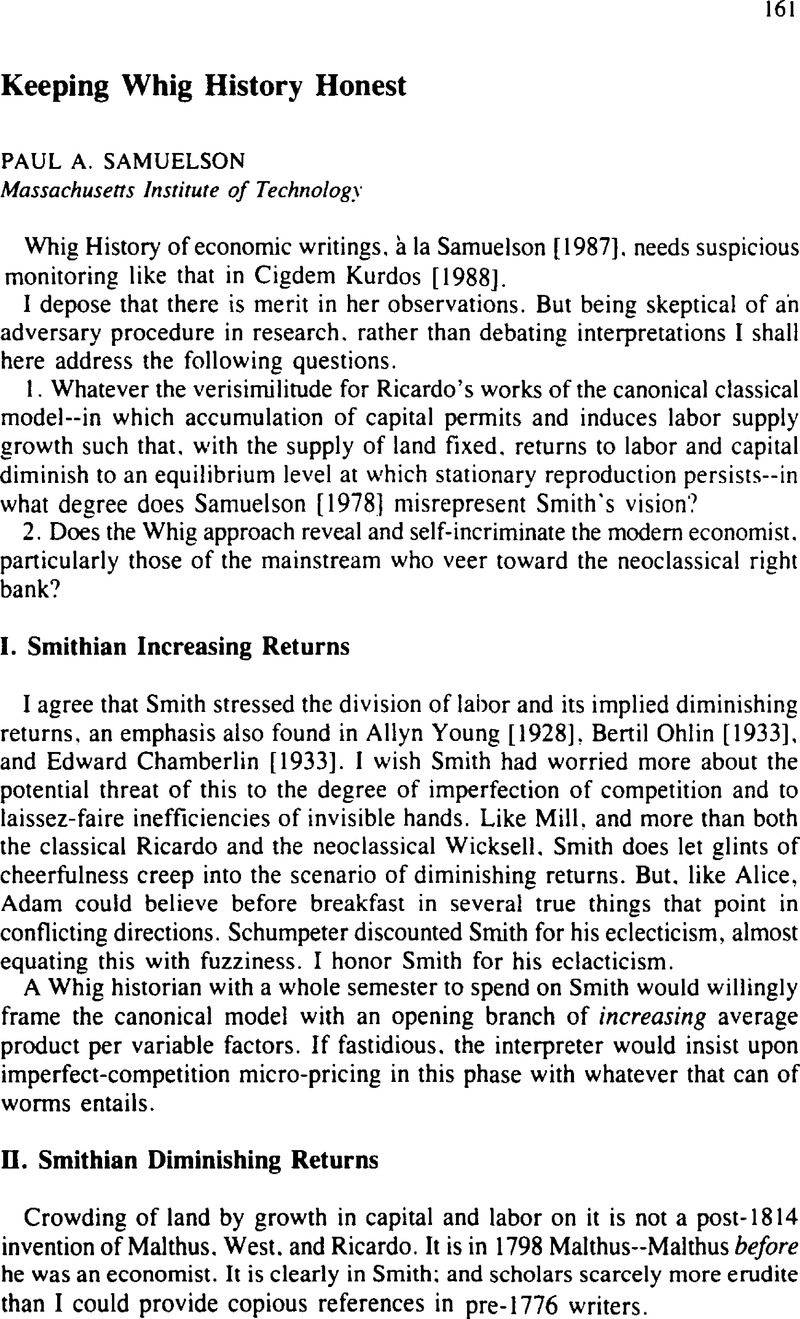Crossref Citations
This article has been cited by the following publications. This list is generated based on data provided by Crossref.
Hollander, Samuel
1989.
On Composition of Demand and Income Distribution In Classical Economics.
History of Economics Society Bulletin,
Vol. 11,
Issue. 2,
p.
216.
Blaug, Mark
1990.
On the Historiography of Economics.
Journal of the History of Economic Thought,
Vol. 12,
Issue. 1,
p.
27.
Samuelson, Paul A.
Patinkin, Don
and
Blaug, Mark
1991.
On the Historiography of Economics: A Correspondence.
Journal of the History of Economic Thought,
Vol. 13,
Issue. 2,
p.
144.
Samuelson, Paul A.
1993.
Gustav Cassel's Scientific Innovations: Claims and Realities.
History of Political Economy,
Vol. 25,
Issue. 3,
p.
515.
Kurdas, Chidem
and
Majewski, Raymond
1994.
The rhetoric of a profession and path dependency. Can economists have their theory and free speech too?∗.
Review of Political Economy,
Vol. 6,
Issue. 3,
p.
337.
Khalil, Elias L.
1995.
Has Economics Progressed? Rectilinear, Historicist, Universalist, and Evolutionary Historiographies.
History of Political Economy,
Vol. 27,
Issue. 1,
p.
43.
1995.
Ricardo - The New View.
1995.
Ricardo - The New View.
Brown, Vivienne
1997.
‘Mere Inventions of the Imagination’: A Survey of Recent Literature on Adam Smith.
Economics and Philosophy,
Vol. 13,
Issue. 2,
p.
281.
Kliman, A.
2014.
The Whiggish foundations of Marxian and Sraffian economics.
Cambridge Journal of Economics,
Vol. 38,
Issue. 3,
p.
643.
Waterman, A. M. C.
2014.
IS THERE ANOTHER, QUITE DIFFERENT, “ADAM SMITH PROBLEM”?.
Journal of the History of Economic Thought,
Vol. 36,
Issue. 4,
p.
401.



